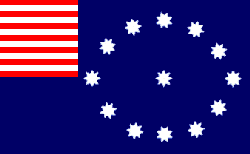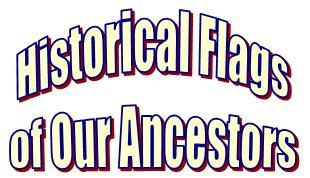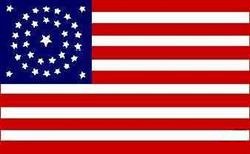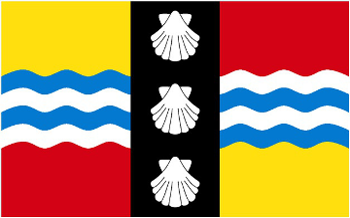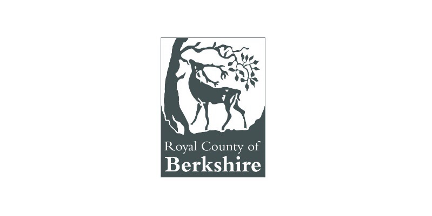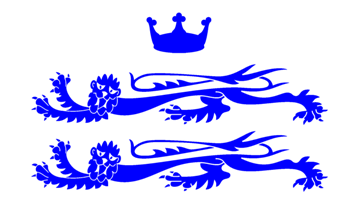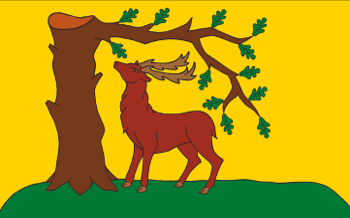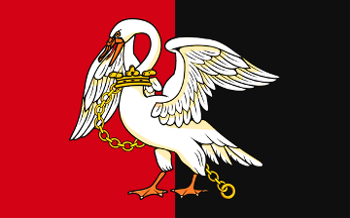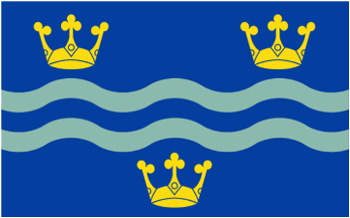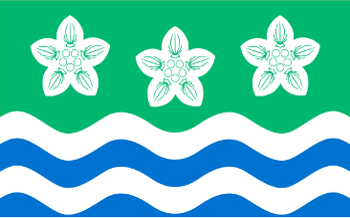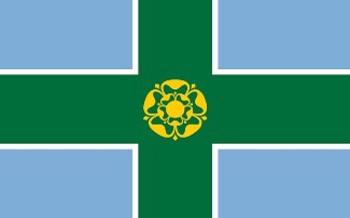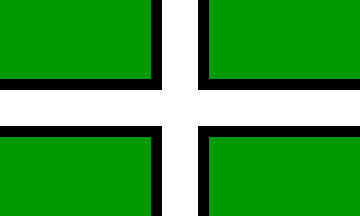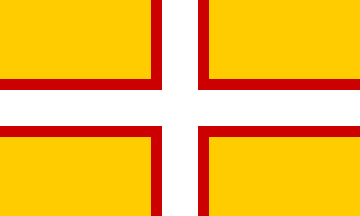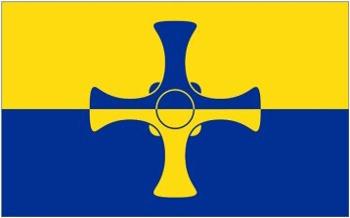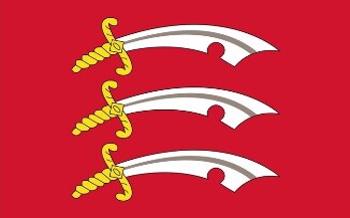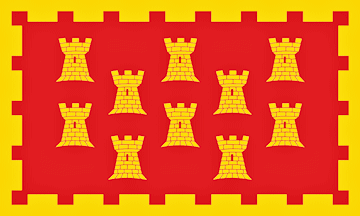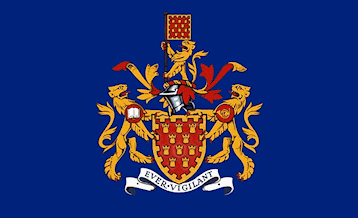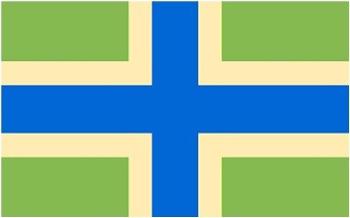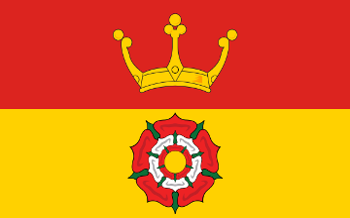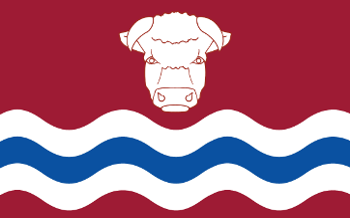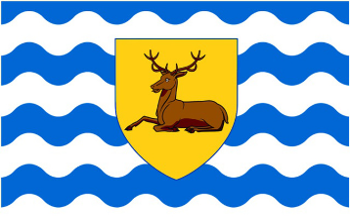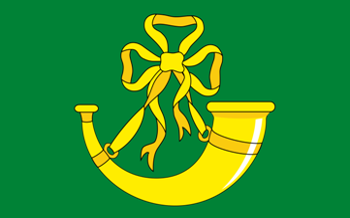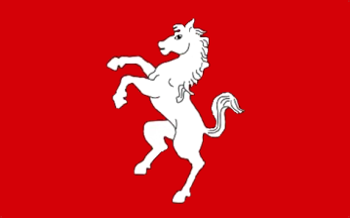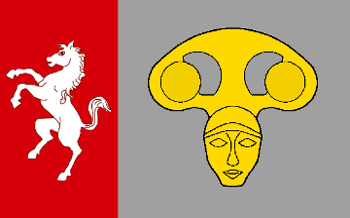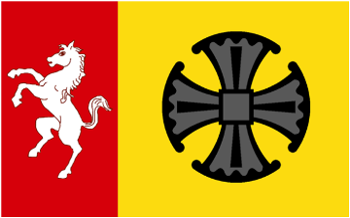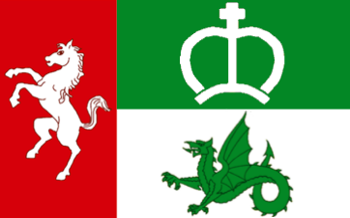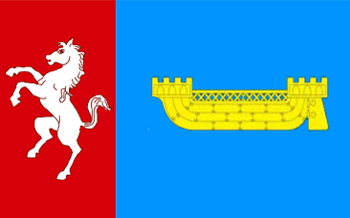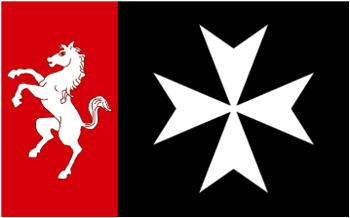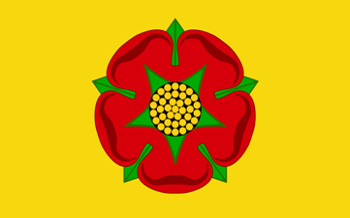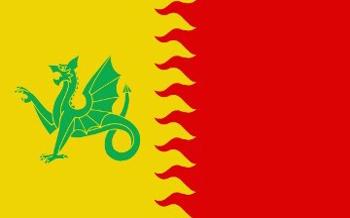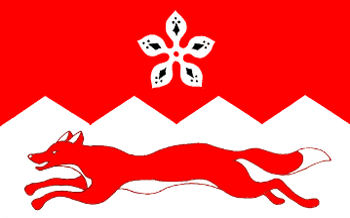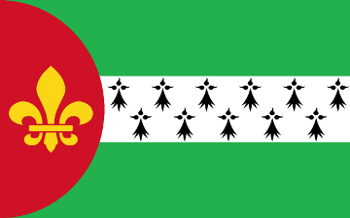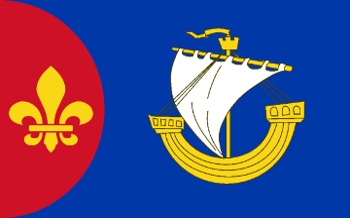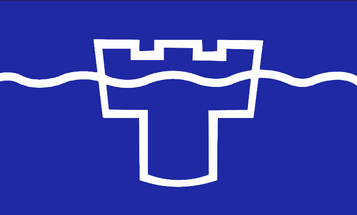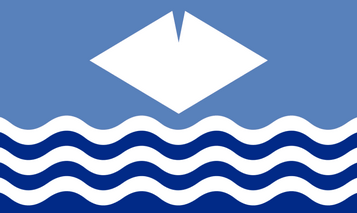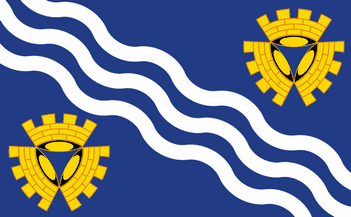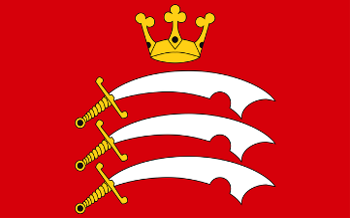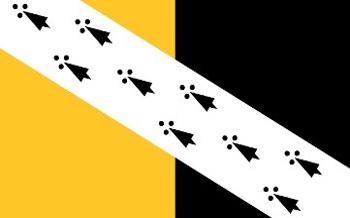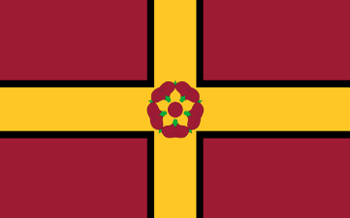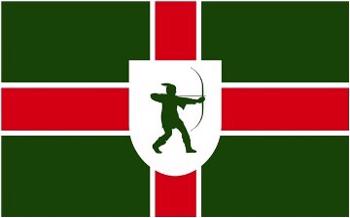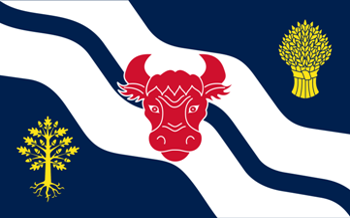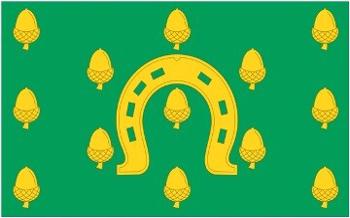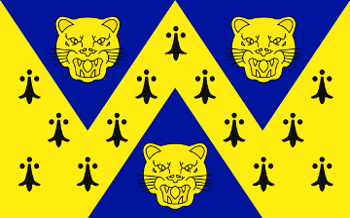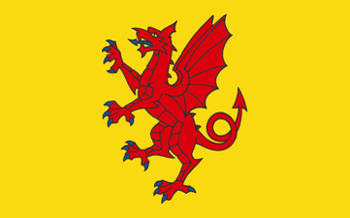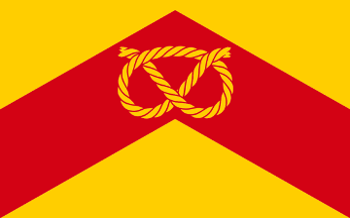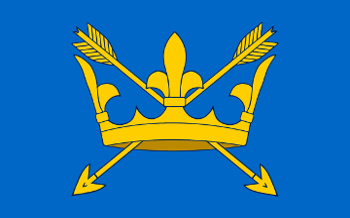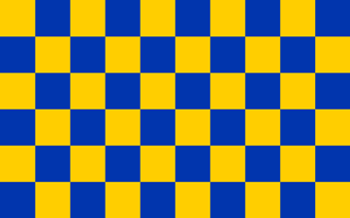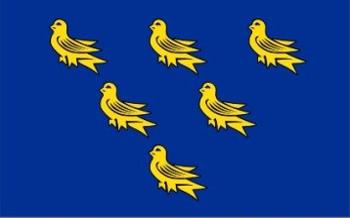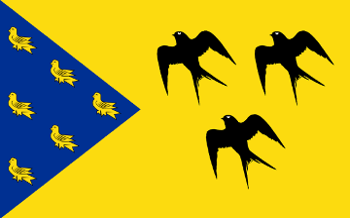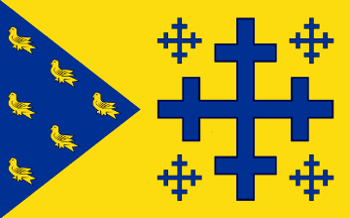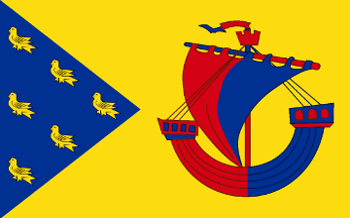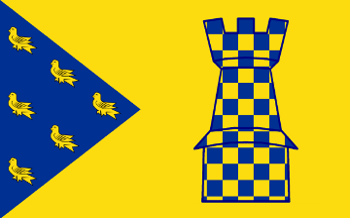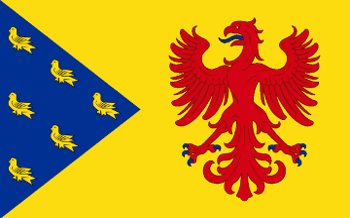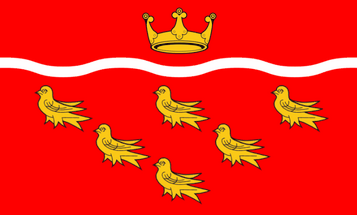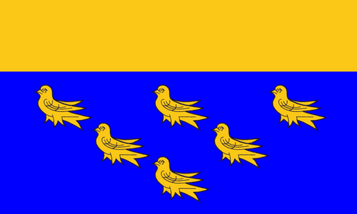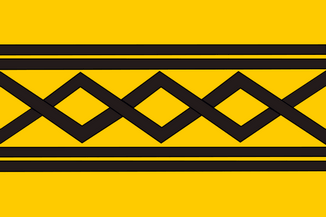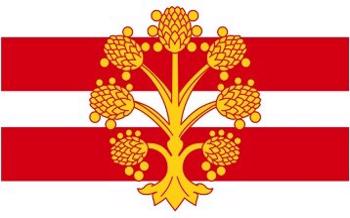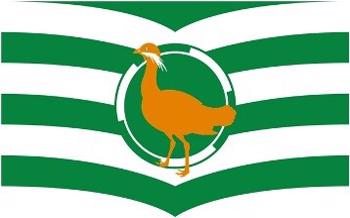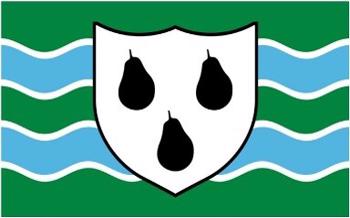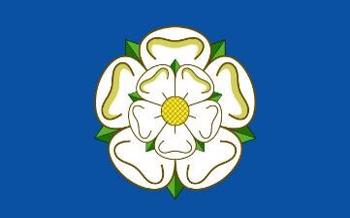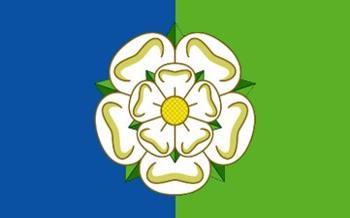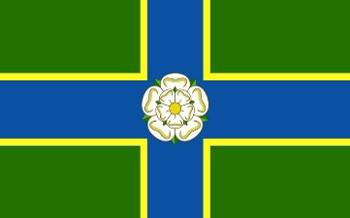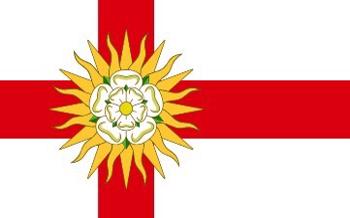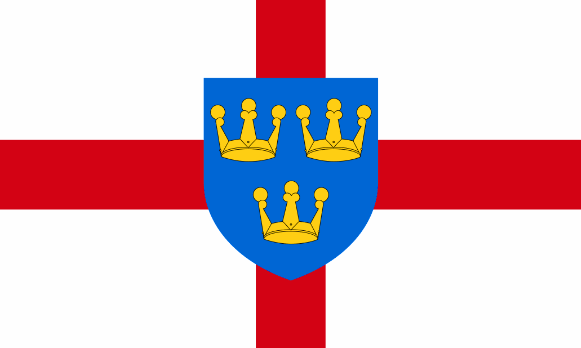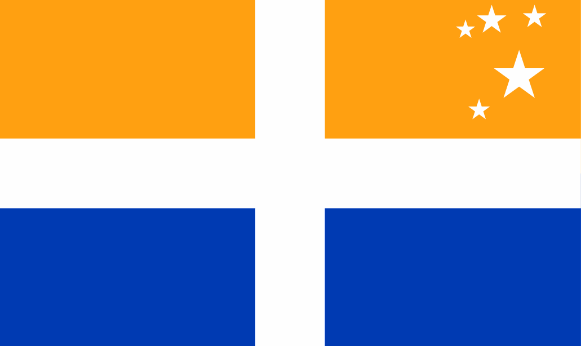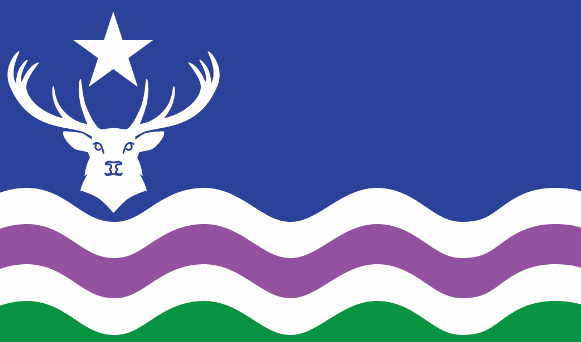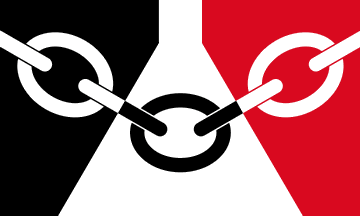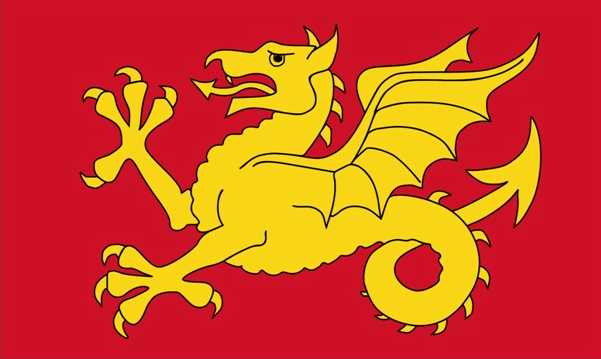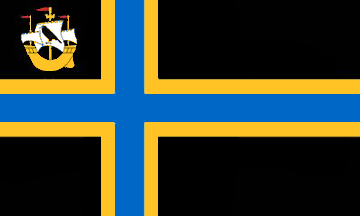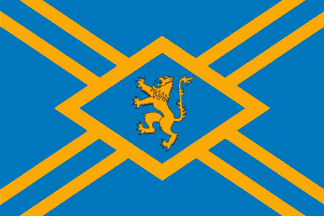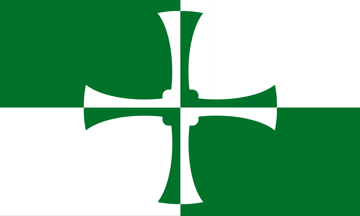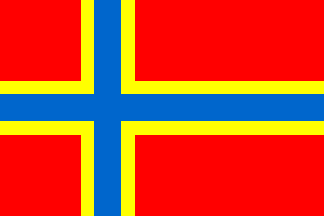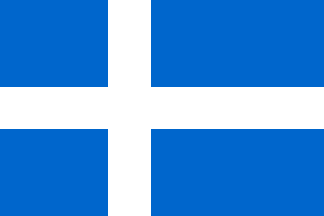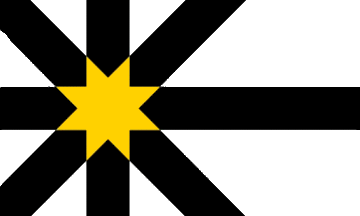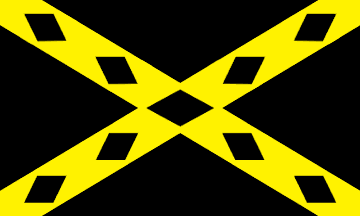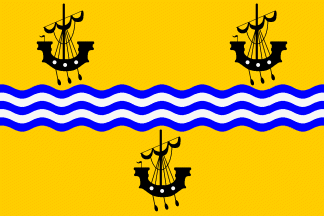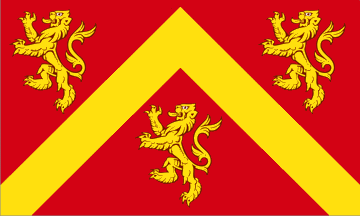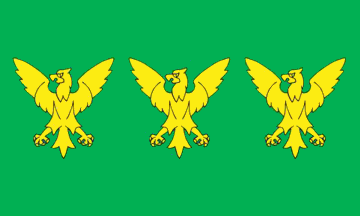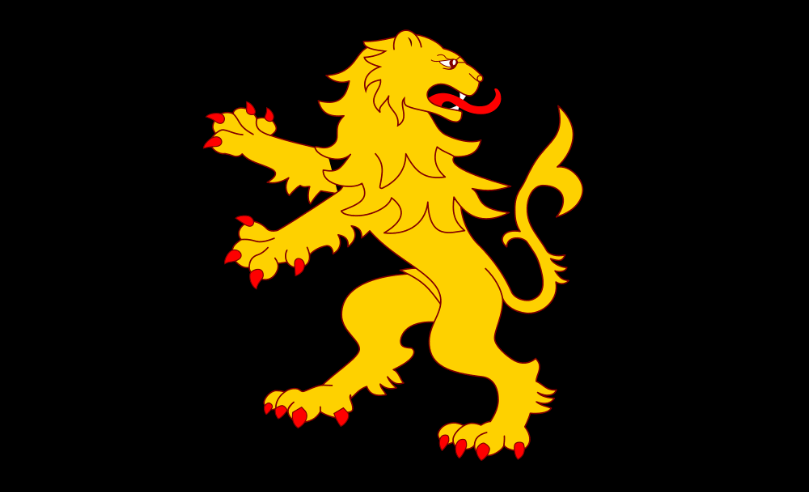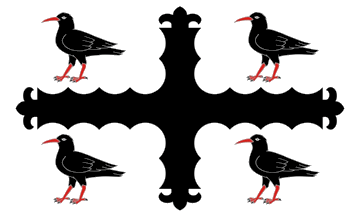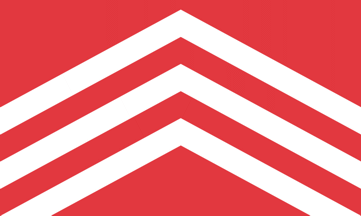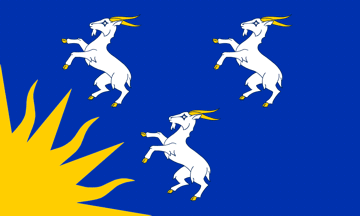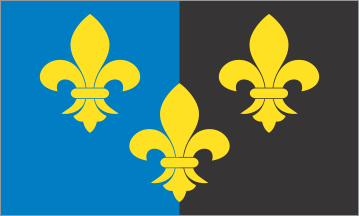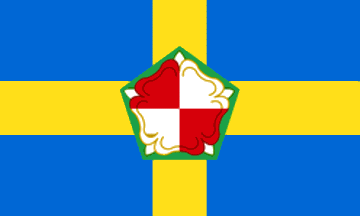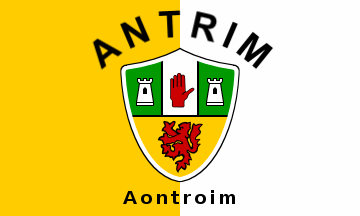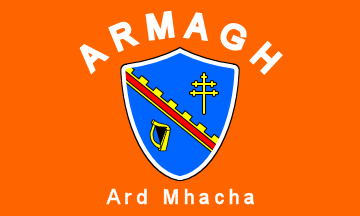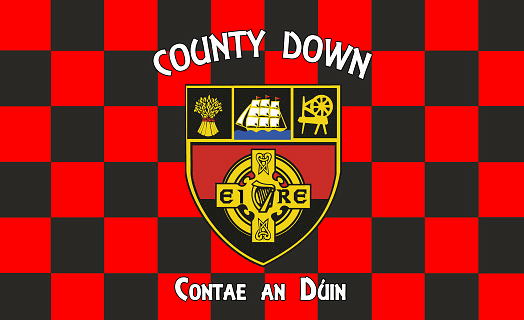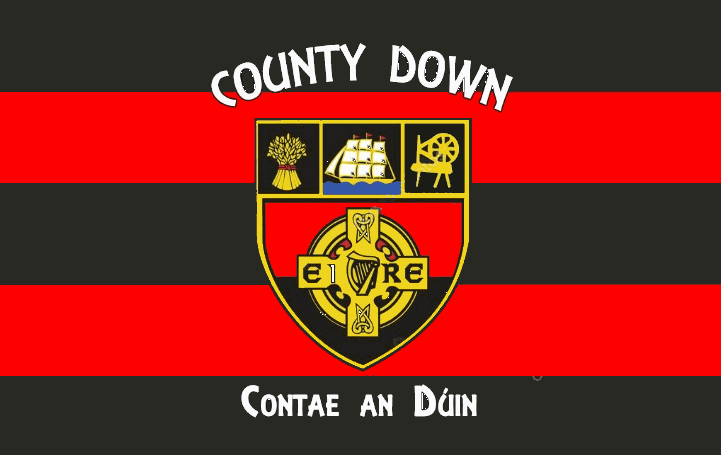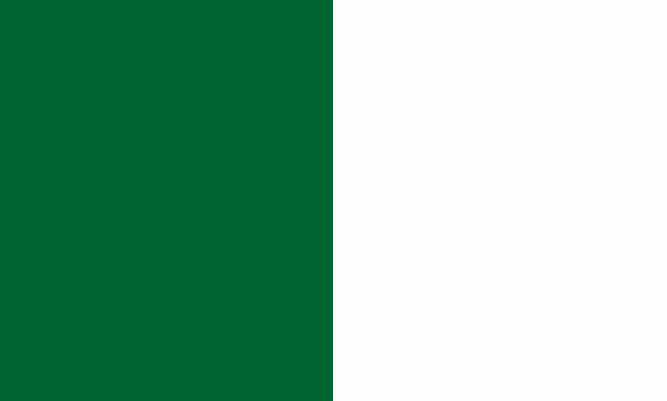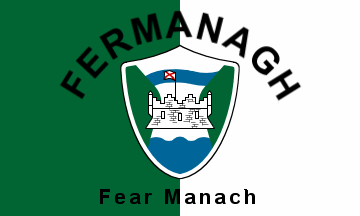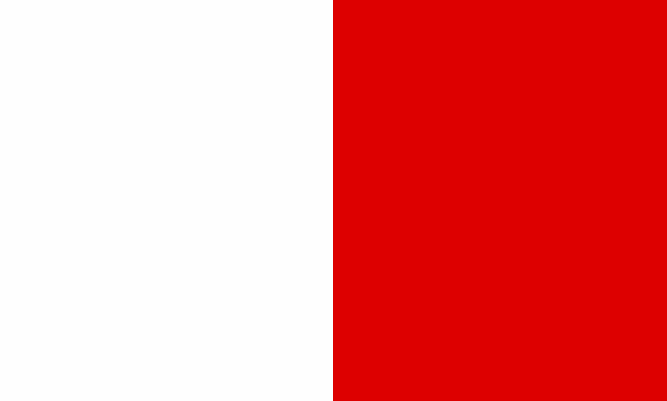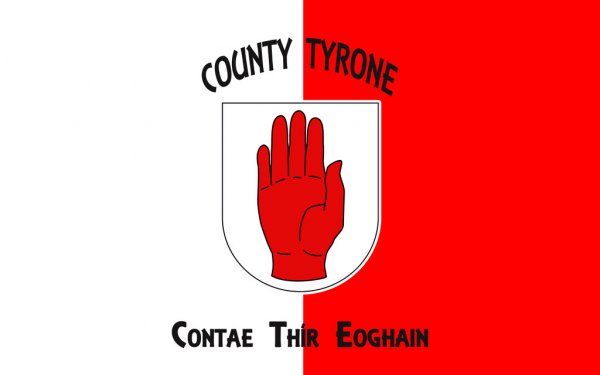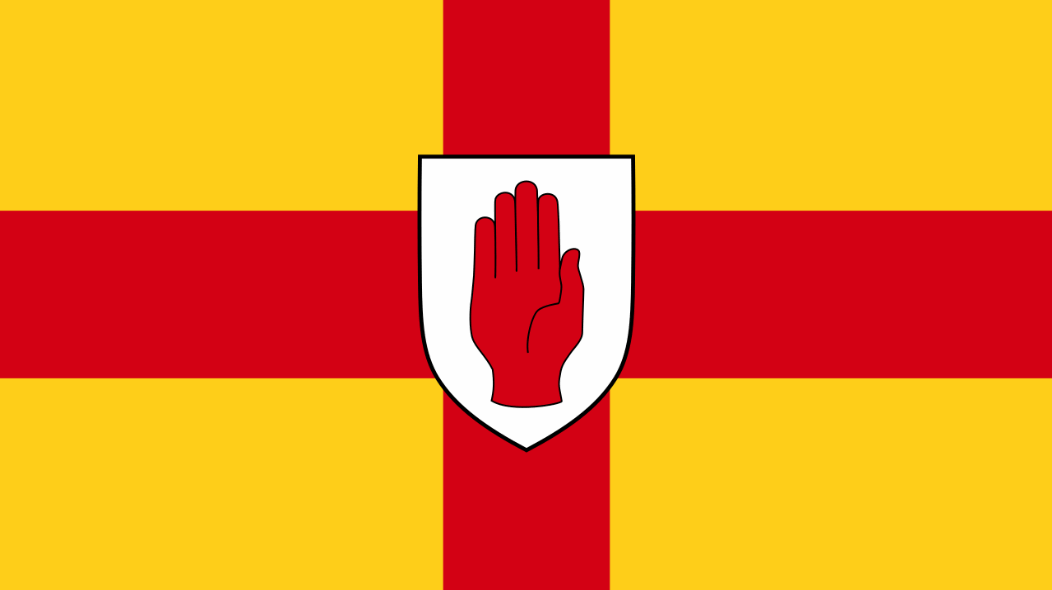Counties Flags of the United Kingdom
England, Scotland, Wales, and Northern Ireland
Note: If an image ever fails to appear - refresh your page, it really is there
| The Flag Institute | English Counties | Scottish Counties | Welsh Counties | Northern Irish Counties |
I. The Flag Institute Registry
In the absence of a United Kingdom Flag Act, the Flag Institute acts as the de facto authority on flags flown in the United Kingdom and the Crown Dependencies and Overseas Territories. The Flag Institute established and maintains the only United Kingdom Flag Registry to provide a formal record of current designs. The flags of the United Kingdom's national and supra-national flags are well established by custom and practice. Meanwhile the number of regional, county and other community flags continues to grow, with over fifty entering the Flag Institute's Flag Registry since 2010. Of the 39 "traditional" counties, all but Leicestershire, have registered their flags on the Flag Institute Registry.
Over the last couple of decades there has been a new interest in the counties and a number of new flags have been designed and approved for both these traditional and ceremonial British counties. They use an interesting combination of modern flag design and historical symbols. The College of Arms now grants coat of arms to any governing councils of local governments in England and Wales desiring them. It is clear these new flags show a theme of using elements from these arms to produce what are very colorful and attractive flags. These heraldry-inspired flags follow the modern principles of good flag design while using the symbols of their past, a true melding of the old and new.
| The Flag Institute | English Counties | Scottish Counties | Welsh Counties | Northern Irish Counties |
II. Introduction to English County Flags ⁺
Most English counties were originally established in the Middle Ages. Some were used for the administration of justice, others for the organization of the military, and some later for parliamentary representation. Originally these feudal lands of England were under the rule of certain families or a certain noble. Over time, however, as the Royal power grew, and the local Lord's power lessened, some of the larger lands were divided into smaller areas, counties or districts, while others were combined into larger counties. There were considerable boundary changes among them over the years. As these areas were exchanged and as cities grew, suburban areas in one county might be annexed by a growing "borough" (town) of another.
One of the confusing things about the English county flags are the terms used to describe them.
- Traditional Counties of England - These are areas that were established for administration by the Normans, in many cases based on earlier kingdoms and shires created by the Anglo-Saxons and others. They are also called "Ancient Counties" or "Historic Counties."
- Ceremonial Counties of England - The counties and areas established as "Lieutenancies," areas of England, Wales and Scotland to which lords-lieutenants are appointed, under the Lieutenancies Act of 1997. They are also known as "Geographic Counties" to distinguish them from other types of counties of England.
There were 39 traditional counties in England until the reforms of 1889-1890. These reforms abolished the traditional county councils or governing bodies, and replaced them with new administrative bodies. However, the areas did remain, but were now divided between "traditional" and "ceremonial" counties. Below are the 48 English counties today (2020).
- Bedfordshire 1
- Berkshire 1
- Bristol 2
- Buckinghamshire 1
- Cambridgeshire 1/6
- Cheshire 1
- City of London 2
- Cornwall 1
- County Durham1
- Cumbria 2/3
- Derbyshire 1
- Devon 1
- Dorset 1
- East Riding of Yorkshire 2/4
- East Sussex 2
- Essex 1
|
- Gloucestershire 1
- Greater London 2/5
- Greater Manchester 2
- Hampshire 1
- Herefordshire 1
- Hertfordshire 1
- Isle of Wight 2
- Kent 1
- Lancashire 1
- Leicestershire 1
- Lincolnshire 1
- Merseyside 2
- Norfolk 1
- North Yorkshire 2/4
- Northamptonshire 1
- Northumberland 1
|
- Nottinghamshire 1
- Oxfordshire 1
- Rutland 1
- Shropshire 1
- Somerset 1
- South Yorkshire 2/4
- Staffordshire 1
- Suffolk 1
- Surrey 1/5
- Tyne and Wear 2
- Warwickshire 1
- West Midlands 2
- West Sussex 2
- West Riding of Yorkshire 2/4
- Wiltshire 1
- Worcestershire 1
|
1 Denotes a Traditional County.
2 Denotes a Ceremonial County.
3 Ceremonial Cumbria includes the traditional Cumberland and Westmorland counties.
4 The traditional county of York has become so large that it is divided into the ceremonial counties of North Yorkshire, South Yorkshire, West Yorkshire and East Riding.
5 Ceremonial Greater London constitutes nearly all of the historic county of Middlesex, parts of the historic counties of Kent, Essex, and Hertfordshire, and a large part of the historic county of Surrey.
6 Ceremonial Cambridgeshire includes the traditional Cambridgeshire and Huntingdonshire counties.
A couple of quick notes:
- All the Traditional English counties are registered on the Flag Institutes Registry except Leicestershire. No Ceremonial Counties are.
- The British almost never use the word "County" to describe a county. The suffix "-shire" means "county", so saying Berkshire County is akin to saying "Berks County County". The only exception would be Durham which is often referred to as "County Durham."
- Be aware that in popular slang and usage county names like Northamptonshire becomes "Northants", Nottinghamshire becomes "Notts", Berkshire becomes "Berks", and Huntingdonshire becomes "Hunts," to give a couple of examples.
- The dates of flags used below indicate the year they were registered with Flag Institute, not necessarily the year they were adopted.
Find below both the flags of the traditional and ceremonial counties of Great Britain and their sub-divisions, including some regional geographical areas:
|
|
|
Bedfordshire 2014
Traditional County |
Royal County of Berkshire c1961 *
Traditional County |
Berkshire 1974 *
Traditional County |
|
|
|
Berkshire 2017
Traditional County |
Buckinghamshire 2011
Traditional County |
Cambridgeshire 2015
Traditional County |
|
|
|
Cheshire 2013
Traditional County |
Cornwall 1800s
Traditional County |
Cumbria *
Ceremonial County |
|
|
|
Cumberland 2016
Traditional County |
Derbyshire 2008
Traditional County |
Devon 2003
Traditional County |
|
|
|
Dorset 2008
Traditional County |
County Durham 2013
"County Durham" is Traditional |
Essex
Traditional County 1800c |
|
|
|
Greater Manchester *
Ceremonial County |
Greater Manchester Variant *
Ceremonial County |
Greater Manchester until 1986 *
Greater Manchester County Council |
|
|
|
Gloucestershire 2008
Traditional County |
Hampshire 2019
Traditional County |
Herefordshire 2019
Traditional County |
|
|
|
Hertfordshire 2008
Traditional County |
Huntingdonshire 2009
Traditional County |
Kent 2010
Traditional County c1800s |
|
|
|
The Lathe of Aylesford *
Traditional part of Kent County |
The Lathe of Saint Augustine *
Traditional part of Kent County |
The Lathe of Scray *
Traditional part of Kent County |
|
|
|
The Lathe of Shepway *
Traditional part of Kent County |
The Lathe of Sutton-at-Hone *
Traditional part of Kent County |
Lancashire 2008
Traditional County |
|
|
|
Part of Furness *
Part of Traditional Lancashire |
Leicestershire *
Traditional County |
Lincolnshire 2005
Traditional County |
|
|
|
Part of Holland *
Part of Traditional Lincolnshire |
Part of Kesteven *
Part of Traditional Lincolnshire |
Part of Lindsey *
Part of Traditional Lincolnshire |
|
|
|
Tyne and Wear *
Ceremonial County |
Isle of Wight 2009
Ceremonial County |
Merseyside *
Ceremonial County |
|
|
|
Middlesex 1909
Traditional County |
Norfolk 2014
Traditional County |
Northamptonshire 2014
Traditional County |
|
|
|
Nottinghamshire 2011
Traditional County |
Northumberland 1951
Traditional Northumbria County |
Oxfordshire 2017
Traditional County |
|
|
|
Rutland 2015
Traditional County |
Shropshire 2012
Traditional County |
Somerset 2013
Traditional County |
|
|
|
Staffordshire 2016
Traditional County |
Suffolk 2017
Traditional County |
Surrey 2014
Traditional County |
|
|
|
Sussex 2011
Traditional County |
Rape of Arundel *
part of Traditional Sussex County |
Rape of Bramber *
part of Traditional Sussex County |
|
|
|
Rape of Chichester *
part of Traditional Sussex County |
Rape of Hastings *
part of Traditional Sussex County |
Rape of Lewes *
part of Traditional Sussex County |
|
|
|
Rape of Pevensey *
part of Traditional Sussex County |
East Sussex *
Ceremonial County |
West Sussex *
Ceremonial County |
|
|
|
Warwickshire 2016
Traditional County |
West Midlands *
Ceremonial County |
Westmorland 2011
Traditional County |
|
|
|
Wiltshire 2009
Traditional County |
Worcestershire 2013
Traditional County |
Yorkshire c1965
Traditional County |
|
|
|
East Riding of Yorkshire 2013
Ceremonial County |
North Riding 2013
Ceremonial County |
West Riding of Yorkshire 2013
Ceremonial County |
|
|
|
South Yorkshire *
Ceremonial County Variant |
South Yorkshire *
Ceremonial County Variant |
|
English Regional (Geographical) Flags
To further confuse British sub-national divisions, there are also recognized geographical regions⁺ with flags registered on the Flag Institute Registry. The trouble with all this is, maps of ceremonial and traditional counties overlap, but are not identical, and regional areas include parts of different counties. Here are some examples:
|
|
|
East Anglia 7
Geographical Area |
Isles of Scilly 2002 8
Geographical Area |
Exmoor 2014 9
Geographical Area |
|
|
|
Black Country 2012 10
Geographical Area |
Mercia c793-138711
Geographical Area |
Wessex 1974 12
Geographical Area |
|
|
|
|
Northumbria 13
Geographical Area |
|
⁺ The regions are the highest tier of sub-national division in England.
7 East Anglia's name comes from the northern German tribe that settled in the area comprising of Norfolk, Suffolk and Cambridgeshire counties, including the City of Peterborough. It was one of the original Anglo-Saxon kingdoms.
8 Since 1930 the Isle of Scilly, part of Traditional Cornwall, has separate local authority and status under an independent county council.
9 Exmoor is an area of moorlands in the hills of West Somerset and North Devon in Southwest England.
10 The Black Country is an area west of Birmingham in West Midlands which includes the four Metropolitan Boroughs of Dudley, Sandwell, Walsall and Wolverhampton.
11 Mercia is remembered as one of the most powerful kingdoms of Anglo-Saxon England. There is a list of 20 counties known to have been within its area at its maximum extent, all located between Yorkshire, Lancashire, Northumbria, Wales, Wessex, Essex and East Anglia. This includes the areas of modern Staffordshire, Derbyshire, Nottinghamshire, Warwickshire, and northern West Midlands.
12 Wessex was another one of the kingdoms of Anglo-Saxon England. In was located in what is the modern counties of Hampshire, Dorset, Wiltshire, and Somerset. Wessex also included Devon and Surrey at its maximum extent.
13 Northumbria, the boundaries of which are a bit elastic, generally is seen to have included Northumberland, Durham, and northern parts of Yorkshire.
| The Flag Institute | English Counties | Scottish Counties | Welsh Counties | Northern Irish Counties |
III. Introduction to Scottish County Flags
The counties (shires) of Scotland (Siorrachdan na h-Alba), are the historic subdivisions of Scotland established in the Middle Ages. Originally Sheriffs had judicial jurisdiction over the counties (sheriffdoms) until 1975 when they ceased to be used for local government purposes under the Local Government (Scotland) Act of 1973.
Today, local government in Scotland is based upon "council areas", which sometimes use the old county names, continue to be used for land registration, but have different boundaries. There are 33 traditional counties in Scotland. *
- Aberdeenshire
- Angus (known as Forfarshire until 1928)
- Argyll (Earra-Ghàidheal)
- Ayrshire
- Banffshire
- Berwickshire
- Buteshire
- Caithness
- Clackmannanshire
- Dumfriesshire
- Dunbartonshire
- East Lothian (Haddingtonshire until 1921)
- Fife
- Inverness-shire (Siorrachd Inbhir Nis) - includes parts of Lewis, Uist & Skye
- Kincardineshire
- Kinross-shire (includes parts of Perth and Kinross)
- Kirkcudbrightshire (The Stewartry)
- Lanarkshire
- Midlothian (Edinburghshire until 1921)
- County of Moray (Elginshire)
- Nairnshire
- Orkney (Orkney Islands)
- Peeblesshire (Tweeddale)
- Perthshire
- Renfrewshire
- Ross and Cromarty (Ros agus Cromba) includes parts of Lewis
- Roxburghshire (Teviotdale)
- Selkirkshire
- Shetland (Shetland Islands)
- Stirlingshire
- Sutherland (Cataibh)
- West Lothian (Linlithgowshire until 1921)
- Wigtownshire
* Not all of the Scottish counties have official flags registered on the Flag Institute Registry.
|
|
|
Caithness 2016
Traditional Gallaibh County |
East Lothian
Traditional Lodainn an Ear County c1300s |
Kirkcudbrightshire 2016
Traditional County |
|
|
|
Orkney 2007 (Orkney Islands)
Traditional County |
Shetland 1969 (Shetland Islands)
Traditional Sealtainn County |
Sutherland 2018
Traditional Cataibh County |
|
|
|
Wigtownshire *
Traditional County |
Western Isles 1990
Hebrides County Council Flag |
Aberdeenshire 2023
Traditional County |
IV. Introduction to Welsh County Flags ⁺
The historic counties of Wales were established by 1535 as geographical entities for administrative purposes, governed by county councils, which existed from 1889 to 1974. They were used for various functions for hundreds of years, but have been largely replaced by contemporary "sub-national divisions" which bear some similarity to their historic names and sizes. They are sometimes referred to as the "ancient counties." There are 13 Counties in Wales. *
- Anglesey - Sir Fôn
- Brecknockshire - Sir Frycheiniog
- Caernarfonshire - Sir Gaernarfon
- Cardiganshire - Sir Aberteifi or Ceredigion
- Carmarthenshire - Sir Gaerfyrddin or Sir Gâr
- Denbighshire - Sir Ddinbych
- Flintshire - Sir y Fflint
- Glamorgan - Sir Forgannwg or Morgannwg
- Merionethshire - Sir Feirionnydd or Meirionnydd
- Monmouthshire - Sir Fynwy
- Montgomeryshire - Sir Drefaldwyn
- Pembrokeshire - Sir Benfro
- Radnorshire - Sir Faesyfed
* Not all of the traditional "Ancient Counties" have official flags registered on the Flag Institutes Registry.
Note: We will use the term "Ancient" instead of "Traditional" for Welsh counties as the Welsh seem to favor it.
|
|
|
Anglesey 2014
Ancient Sir Fôn County |
Caernarfonshire 2012
Ancient Sir Gaernarfon County |
Cardiganshire (Ceredigion) *
Ancient Sir Aberteifi County |
|
|
|
Flintshire 2015
Ancient Sir y Fflint County |
Glamorgan 2013 (Morgannwg)
Ancient Sir Forgannwg County |
Merionethshire 2011
Ancient Sir Feirionnydd County |
|
|
|
Monmouthshire 2011
Ancient Sir Fynwy County |
Pembrokeshire 1988
Ancient Sir Benfro County |
|
| The Flag Institute | English Counties | Scottish Counties | Welsh Counties | Northern Irish Counties |
V. Introduction to Northern Irish County Flags
In 1921 votes were held county by county in Ulster to determine whether the county would stay in the United Kingdom or go with the new "Irish Free State." Six of the counties voted to stay in the United Kingdom and became Northern Ireland, but three went with those in "Southern Ireland." Cavan, Donegal, and Monaghan are the three Ulster counties which stayed within the Free State, and the six traditional counties which became Northern Ireland were:
- Antrim
- Armagh
- Down
- Fermanagh
- Londonderry
- Tyrone
These six historic counties in Northern Ireland are no longer in use for administrative purposes and have no have official flags registered on the Flag Institutes Registry.
The Irish just seem happy to use two-color athletic team flags (Gaelic Football, Hurling, etc.) for their visual county identity. There are no official governmental county flags, just these sports oriented ones, which are widely displayed at games and on game days. These are just some representative examples.
|
|
|
County Antrim
County Colors |
County Antrim
County Sports Flag |
County Armagh
County Colors
|
|
|
|
Armagh
County Sports Flag |
County Down
County Colors |
County Down
County Sports Flag |
|
|
|
County Down Variant
County Sports Flag |
Fermanagh
County Colors |
Fermanagh
County Sports Flag |
|
|
|
Londonderry
County Colors
|
Londonderry
County Sports Flag |
County Londonderry
County Sports Flag |
|
|
|
Tyrone
County Colors |
County Tyrone
County Sports Flag |
Ulster
Province of Ireland 14 |
14 Ulster predates the formation of the Republic of Ireland (Éire). Because of this the traditional flag of Ulster is shared and flown proudly in both Northern Ireland and Éire by all nine of its original Ancient Irish counties - three in Éire and six in Northern Ireland.
My thanks: to Valentin Poposki for his initial research and enthusiasm for this subject, to Tomislav Todorović for his
fact checking and valuable input, and to Rob Raeside for his help double checking and "anglicizing" it all.
| Flag Institute | English Counties | Scottish Counties | Welsh Counties | Northern Irish Counties |
| English Page #1 (1189-1800) | English Page #2 (1800-1900) | English Page #3 (1900-present) |
|
